Flashing Satellites
images with MINTRON 12V1C-EX and lens f=75 mm f/1.3
field of view 5.0 x 3.7
deg
Two flashing satellites
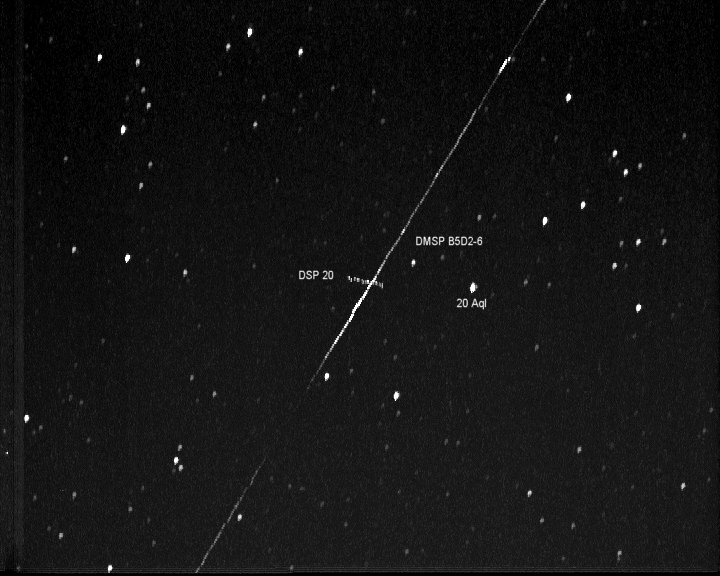
Evening flashes from DSP 20
(2000-024A, 26356) and irregular flashes from DMSP B5D2-6
(1991-082A, 21798).
200 frames each integrated for 0.32 seconds (2003 Oct 02
18:00:14 - 18:01:18 UTC), stacked with Fitswork, aligned on the
stars.
While the flashes from DSP 20 moved slowly between the stars,
DMSP B5D2-6 crossed the field moving upwards
from 18:00:16 to 18:00:40.
Cosmos 2217 (1992-069A 22189)
Oko early-warning satellite in Molniya orbit
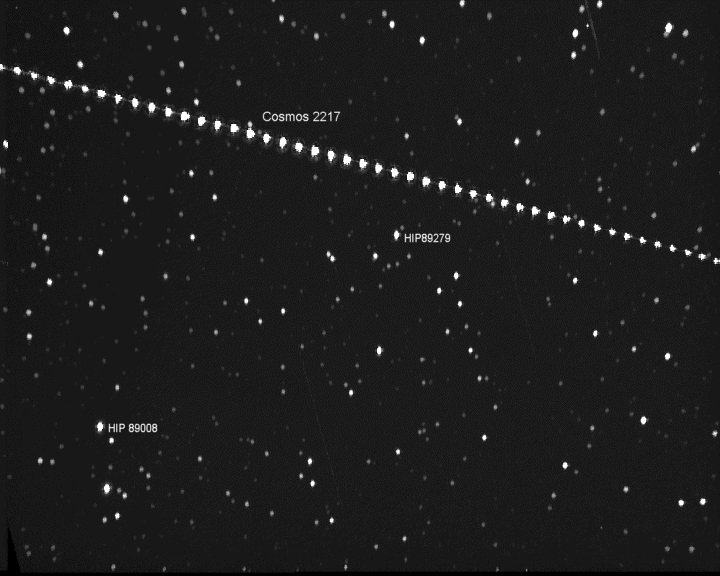
Flashes from Cosmos 2217 captured 2003 Sep 21 20:24:05 -
20:29:37 UTC.
519 frames each integrated for 0.64 seconds, stacked with
Fitswork, aligned on the stars.
The flash period is 7.04 seconds. The brightest flashes are about
mag 4.
The satellite moved from Hercules into Lyra.
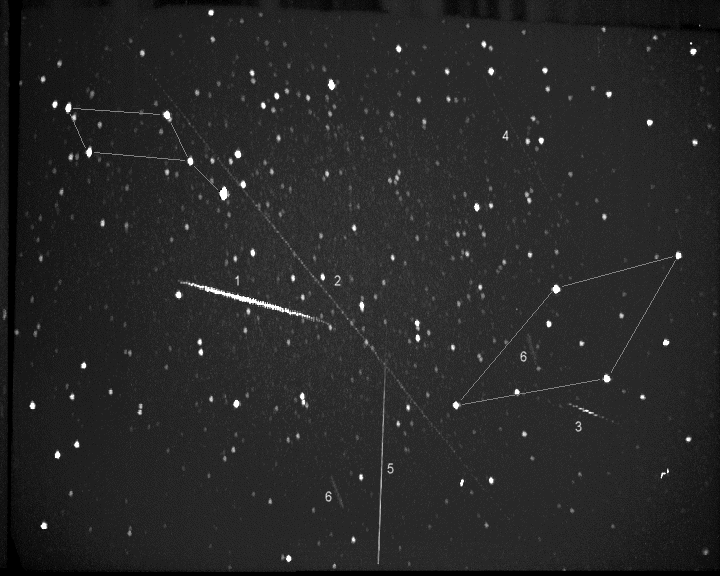
Cosmos 2217 captured 2003 Sep 20 20:27:28 - 20:35:25 UTC with
lens f = 12 mm, f/1.4, field of view 30 x 22 deg.
Individual flashes are not visible as the satellite moved too
slowly.
1 Cosmos 2217
2 Topex r
3 Cosmos 2400 r
4 Cosmos 44 r
5 meteor
6 not entirely removed hot pixel
European DSP (DSP 20 2000-024A
26356)
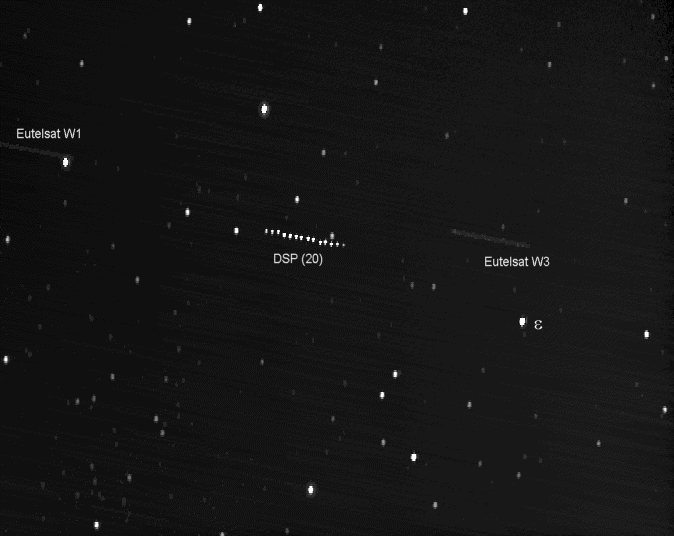
Flashes from the European DSP captured through thin clouds
2003 Mar 07 22:50:03 - 22:52:14 UTC.
103 frames each integrated for 1.28 seconds, stacked with Giotto,
aligned on the stars (epsilon
Sextantis is marked). The flash period is 10 seconds. The
brightest flashes are about mag 5.
| Name |
IntDes |
# |
Lambda |
i |
| Eutelsat W1 |
2000-052A |
26487 |
10.0 E |
0.03 |
| DSP 20 |
2000-024A |
26356 |
8 E |
0.70 |
| Eutelsat W3 |
1999-018A |
25673 |
7.0 E |
0.01 |
Cosmos 1432 (1983-002D 13764)
and GEO331
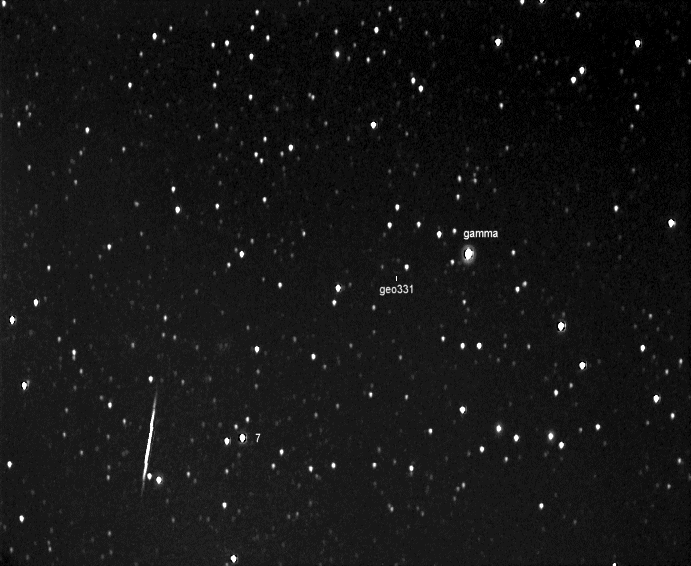
A long (about 5 seconds)
flash/glint from Cosmos 1432 close to 7 Mon. Ten frames (2003 Mar
13 20:57:12 -24 UTC)
each integrated for 1.28 seconds, stacked with Giotto, aligned on
the stars. GEO331 is faintly visible. It is more easily
seen if the captured AVI-file is displayed with a high framerate.
EGP (1986-061A 16908)
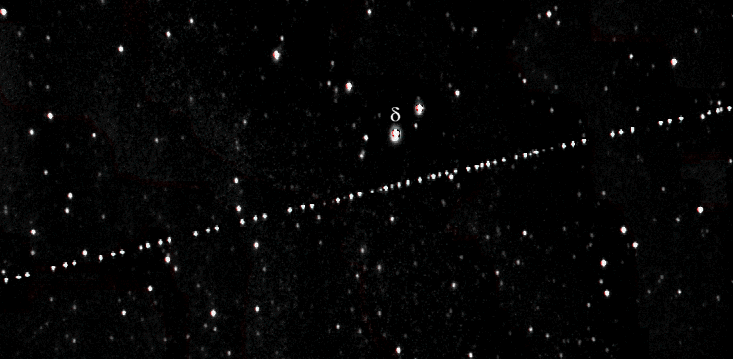
EGP passing just south of delta Mon (right to left). 46 frames
(2003 Mar 14 20:42:12 - 20:42:41 UTC) each integrated
for 0.64 seconds, stacked with Giotto, aligned on the stars. The
Moon (83% lit) is interfering. 60+ flashes are
visible in 29.44
seconds or about two flashes per second. The time from one triple
flashe to the next is 1.9 seconds. The time from the first
flash of a triple to the third flash is 0.8 seconds.
Midas 9 (1966-089A 02481)
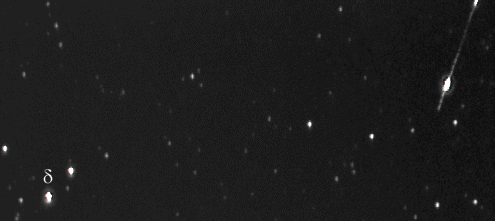
A Flash from Midas 9. 21 frames (2003 Mar 14 20:38:25 - 38 UTC)
each integrated for 0.64 seconds,
stacked with Giotto, aligned on the stars.
IntlSat 5-3 Rk (1981-119B) and
Cosmos 1783 (1986-75A)
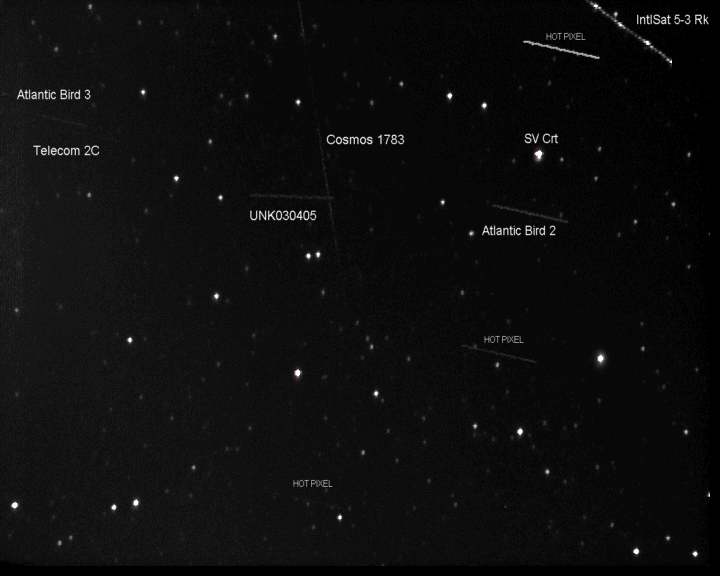
Flashes from Intelsat 5-3 Rk and Cosmos 1783. 100 frames (2003
Apr 05 22:59:55 - 23:02:04 UTC) each integrated
for 1.28 seconds, stacked with Giotto, aligned on the stars.
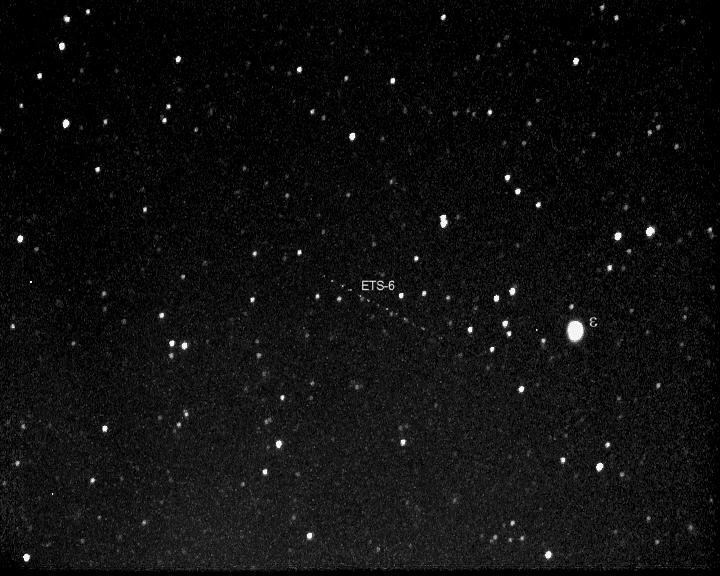
Flashes from ETS-6 (19994-56A, 23230) in the constellation of
Ophiuchus. 200 frames (2003 Aug 04 21:22:23.5 - 23:27.5 UTC)
each integrated for 0.32 seconds, stacked with FitsWork.
image with MINTRON 12V1C-EX and lens f=12 mm f/1.4
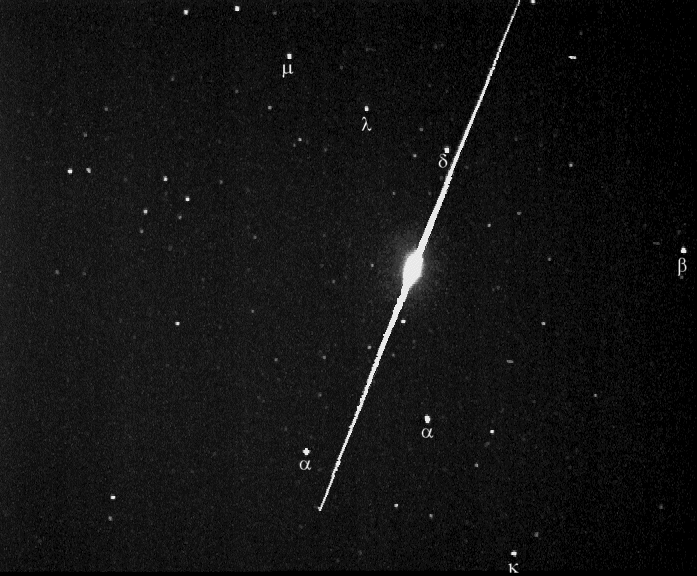
A bright flare from Iridium 37. 375 frames (2003 July 22 22:44:50
- 22:45:50 UTC) each integrated for 0.16 seconds,
stacked with FitsWork, aligned on the stars. Field of view is
about 29 x 22 degrees (lens f=12 mm, f/1.4).
The satellite moved upwards. The trail begins close to alpha Oph
and passes close to delta Her.
According to Heavens-Above the flare center was 0.6 km to the
East giving a mag -8 flare.









